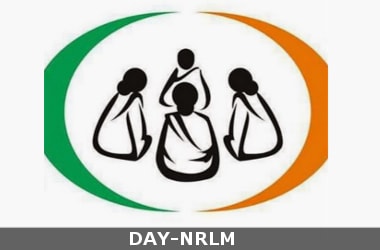
The Deen Dayal Antyodaya Yojana–National Rural Livelihood Mission (DAY-NRLM) is making a difference to the lives and livelihoods of over 3.6 crore households from where women have joined Self Help Groups (SHGs).
The collectives of women under SHGs, Village Organisations (VOs) and Cluster Level Federations (CLFs) has evolved transformational social capital that is changing gender relations, access to services and participation in Gram Sabhas and Panchayati Raj Institutions (PRIs).
The programme has given confidence to women to seek Bank loans for economic activity after developing skills and competencies through a sustained Community Resource Person (CRP) led handholding for livelihood diversification.
Since the inception of the programme in 2011, women members of SHGs have accessed Rs. 1.06 lakh crore as Bank credit.
From INR 20,000 crore Bank linkage in 2014-15, SHGs got more than INR. 30,000 crore as credit in 2015-16.
Till February 2017 over INR. 29,000 crore had already been disbursed and it is expected that about INR. 35,000 crore to Rs. 38,000 crore will be mobilised as credit in the Financial Year 2016-17.
Analysis of Bank linkage in 2016-17 shows the remarkable increase in credit linkage in States like Assam, Bihar, Odisha, Rajasthan and West Bengal.
Under the DAY-NRLM, over 30 lakh women farmers have been supported under Mahila Kisan Sashaktikaran Pariyojana (MKSP) to promote sustainable agricultural practices.
The DAY-NRLM programme has reached nearly 1/3rd of the Gram Panchayats of the country and efforts for its consolidation and expansion are being continuously made.
During 2017-18, 52 lakh households through 4.5 lakh new SHGs were added to DAY-NRLM. Start-up Village Entrepreneurship Programme (SVEP) to develop 84,000 micro enterprises was started in 17 States covering 47 Blocks.
Solid Waste Management initiative through convergence was done in 11,000 (nearly 90%) villages of Tamil Nadu through their women SHGs.
To facilitate diversification of livelihoods, skill development for Placement Based Wage Employment and self-employment was promoted on a large scale through the Deen Dayal Upadhyaya Grameen Kaushalya Yojana (DDUGKY) and Rural Self Employment & Training Institutes (RSETIs) respectively under DAY-NRLM.
The first National evaluation of DAY-NRLM has been completed recently by the Institute of Rural Management Anand (IRMA).
Tamil Nadu, Madhya Pradesh, Uttar Pradesh, Andhra Pradesh and Chattisgarh are ahead of other States in addressing urban poverty during the last three years i.e 2014-17.
Tamil Nadu is in the forefront in assisting urban poor with subsidized loans for self-employment through setting up of individual and group micro enterprises and formation of Self-Help Groups under Deen Dayal Antyodaya Yojana-NULM (DAY-NULM) and Uttar Pradesh led in skilling urban poor. Madhya Pradesh stood second in skill training and providing loans support.
NULM: Know More- National Urban Livelihoods Mission (NULM) was launched in September,2016.
- It has the objective of reducing the poverty and vulnerability of urban poor households by enabling them to access gainful self-employment and skilled wage employment opportunities for improvements in their livelihoods on a sustainable basis.
- NULM which was launched in 790 cities and towns in 2013 was subsequently extended to all the statutory 4,041 cities and towns in February, 2016.
- During 2014-17, 8,07,187 urban poor were given skill training, 1,35,158 beneficiaries were given subsidized bank loans for setting up own enterprises and 1,62,285 Self-Help Groups have been formed for taking up income augmenting activities with the support of bank loans.